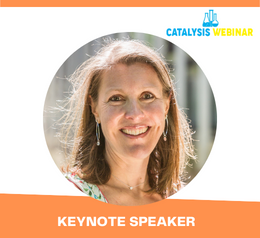Scholars International Webinar on
Catalysis, Chemical Engineering & Technology
THEME: "Contemporary Advances and Innovations in Catalysis and Chemical Engineering Research"
 25-26 Nov 2021
25-26 Nov 2021  Online | Virtual
Online | Virtual THEME: "Contemporary Advances and Innovations in Catalysis and Chemical Engineering Research"
 25-26 Nov 2021
25-26 Nov 2021  Online | Virtual
Online | Virtual 
University of Antwerp, Belgium
Title: Plasma technology for electrification of chemical reactions
Annemie Bogaerts obtained her PhD
diplomas at University of Antwerp in 1996, and is professor since 2003, and
full professor since 2012. She is leading the research group PLASMANT, which
she started “from scratch”, and which currently counts almost 50 members. Her research
focuses on plasma chemistry, plasma reactor design and plasma-surface
interactions, by experiments and modeling, mostly for green chemistry (plasma
catalysis) and medical applications (cancer treatment).
She has above 500 peer-reviewed publications
since 1995, and above 18,000 citations, with a H-index of 68 (Web of
Science) (above 26,000 citations and H-index of 80 in Google Scholar). She has above 230 invited lectures at international conferences or universities (since
1995). She was the supervisor of 44 finished PhD
theses (since 2005), and is now supervising 30 PhD students (incl. several
joint PhD students), and 15 postdocs. In 2019, she obtained
the prestigious ERC Synergy Grant, the highest recognition in Europe.
Plasma technology is gaining increasing interest for various gas conversion applications, such as CO2 and CH4 conversion into value-added compounds, and N2 fixation for fertilizer applications, i.e., more in general: green chemistry. Plasma is a (partially) ionized gas, created by applying electricity. It consists of electrons, various ions, radicals, excited species, besides neutral gas molecules. The electrons are mainly heated by the applied electric field, due to their small mass, and they activate the gas molecules by electron impact ionization, excitation and dissociation, creating new ions, excited species and radicals. These are very reactive, so they can easily produce new products. Hence, thermodynamically or kinetically limited reactions can proceed at mild conditions of gas temperature and pressure, because the gas activation is accomplished by the electrons. Typically, plasma reactors operate at atmospheric pressure and the gas is introduced at room temperature. Plasma technology has low CAPEX costs. Finally, the plasma reactors can quickly be switched on/off, and because they operate with electricity, they are very suitable to be combined with (fluctuating) renewable electricity, for electrification of chemical reactions. To improve this application in terms of conversion, energy efficiency and product formation, a good insight in the underlying mechanisms is desirable. We try to obtain this by computer modelling, supported by experiments.
I will first give a brief explanation about different types of plasma reactors used for green chemistry applications. That will be followed by an overview of the state of the art in plasma-based CO2 and CH4 conversion, as well as N2 fixation, with these different types of plasma reactors, and a brief discussion of the opportunities and main challenges. Subsequently, I will present some recent results obtained in Antwerp in this domain, including experiments and modeling for a better understanding of the underlying mechanisms.